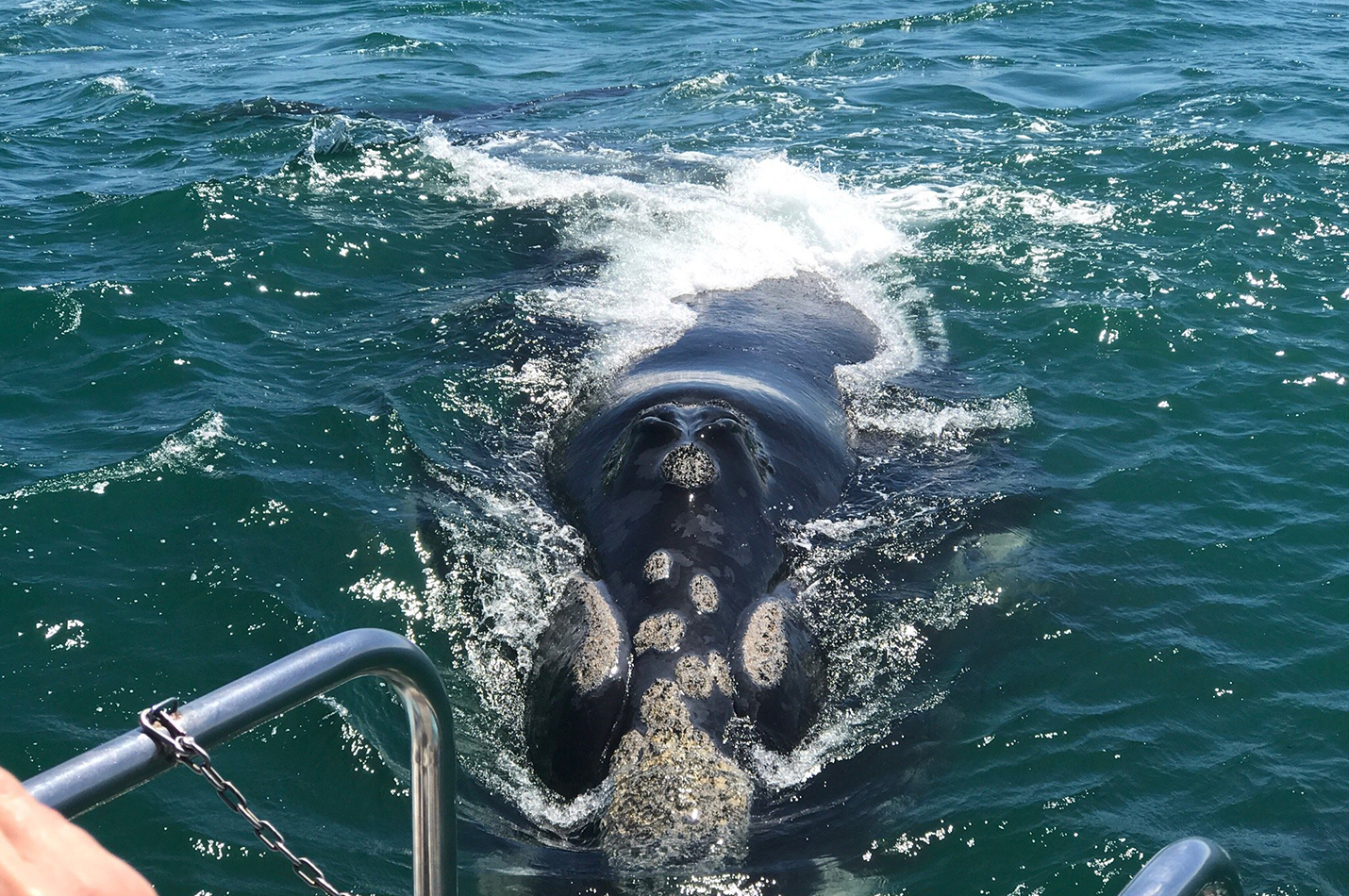Every year Southern Right Whales migrate from their icy feeding grounds off Antarctica to warmer climates, reaching South Africa in June. The coastal waters teem with the giant animals, mating, calving and rearing their young – and giving whale-watchers spectacular displays of raw power and elegant water acrobatics.
Considering that whales can be seen from as close as a few metres from the rocky cliffs, Hermanus deserves its title of best land based whale watching in the world. The most enjoyable aspect to whale watching in Hermanus is the ability to wander the cliff paths which stretch from one side of town to the other – some 12 kilometers in all. With access to the paths from many points, one can opt to walk only as far as one pleases. Interpretative signboards providing visitors with essential information on the Southern Right whales at various points between the New Harbour and Grotto Beach.
A familiar and well-loved sight and sound in the centre of Hermanus over the past years is the Whale Crier, blowing his kelp horn to alert visitors to the presence of whales along the cliff path. As media interest in the world’s only whale crier grew by means of dozens of press and TV interviews, he became one of Hermanus’s top tourist attractions.
From June to December the very popular whale watching boat trips also depart from the Hermanus Harbour to give visitors a close-up experience of these gentle giants of the ocean.
The Southern Right Whale gets its name from the simple fact that it was once regarded it as the “right” whale to hunt – the animals are slow-moving, rich in oil and baleen, float when killed and provide an enormous yield.
This “rightness” brought the animals to the brink of extinction in the early 20th century, as whalers killed an estimated 20,000 of the animals. Protected in South African waters since 1935, their numbers have slowly crept back to a world population of some 6 500, most of which visit the country’s coastline every year.
From a distance, Southern Rights can be distinguished from other whales by their signatory 5 meter high V-shaped spray when they come to the surface for a 300 k.p.h blow. They also sport collosities on and around their heads which are growths of tough skin forming unique patterns for each individual. The collosities are used for whale identification.
Strong bonds exist between females and their calves, and mothers have been observed playing with their young for hours on end. In normal circumstances they are non-aggressive towards man and have earned the moniker ‘gentle giant’ for their passive behaviour towards humans in the water. As yet, knowledge about whales and the role they play in the marine ecosystem is fragmentary. However, initial research indicates that whales are of greater benefit to man alive than dead. For this reason, if no other, they need our protection.
Typical Whale behaviour.
Breaching: Whales can lift their entire bodies out of the water in massive, graceful leaps. Keep watching as they usually breach three to five times in succession. A whale may push three-quarters, or more, of its body out the water and fall back into the sea with an enormous splash – a spectacular sight! Scientists are not yet sure whether this is a means of communication, an aggressive display, or simply an act of sheer exuberance.
Spyhopping: Whales lift their heads and part of their bodies out of the water vertically. This gives them a 360° view of the world above the water. Could this be out of curiosity?
Lobtailing: Whales slap their tails on the surface producing loud claps. This may be done repeatedly over long periods of time. It may be a form of social communication or a warning to rival whales or sharks.
Sailing: Whales sometimes lift their tails clear of the water for long periods. This could be a means of catching the wind to ‘sail’ through the water, or as a way of cooling down. Some locals believe whales just enjoy showing off a well-turned tail!
Blowing: This is the hollow, echoing sound made when air is expelled from the lungs through the blowhole, accompanied by a spout of water vapour. The shape of the spout enables whale watchers to identify the type of whale.
Grunting: A loud, bellowing sound that carries up to 2km, often heard at night.
Playing with kelp: Whales may be seen within the outer edges of kelp beds, or actively manipulating pieces of floating kelp over their backs or heads. They appear to enjoy this contact and the kelp possibly acts as a rough loofah for the release of dead skin and whale lice.ade when air is expelled from the lungs through the blowhole, accompanied by a spout of water vapour. The shape of the spout enables whale watchers to identify the type of whale.
Grunting: A loud, bellowing sound that carries up to 2km away, often heard at night.
Playing with kelp: Whales may be seen within the outer edges of kelp beds, or actively manipulating pieces of floating kelp over their backs or heads. They appear to enjoy this contact and the kelp possibly acts as a rough loofah for the release of dead skin and whale lice.







